|
20 year ago, Faro was just a sleepy provincial town. Today, it displays all the facilities of a modern European town, with an attractive shopping area, some decent restaurants and a "real" Portuguese feel in contrast to many nearby resorts. Excellent beaches, too, are within easy reach, and in summer there's quite a nightlife scene, as thousands of travelers pass through on their way to and from the airport, 6km west of the town. Though it has a long history, Faro was sacked and burned by the Earl of
Essex in 1596 almost all of the city's buildings were destroyed by the
Great Earthquake of 1755 and most of its finest b Some of its most fascinating buildings are all in the old, semi-walled quarter on the south side of the harbor, centered around the majestic Largo da Sé and entered through the eighteenth-century town gate, the Arco da Vila. The Largo is flanked by the bishop's palace and the Sé itself, a collection of Gothic, Renaissance and Baroque styles, remodeled after the Earthquake. More impressive is the nearby Museu Arqueológico, installed in a fine sixteenth-century convent. The most striking exhibit is a third-century Roman mosaic of Neptune and the four winds, unearthed near Faro train station. |
||||||
|
Faro is more than just beautiful architecture, history and beaches. Blessed with a festive nightlife, the Algarve offers an outstanding range of nighttime options. From pubs to clubs to discotheques, the region has it all, and most of it is can be found at Albufeira - the heart of the region's nightlife - with its narrow downtown streets harboring numerous restaurants, pubs and clubs. |
||||||
|
Elsewhere in Olhos de Água and Aldeia da Oura have much to offer while the Vilamoura region, with its marina and casino, provide a slightly luxurious set of options. Faro, Tavira, Lagos and Portimão - especially the Praia da Rocha - are towns that has strong reputation as top night spots --- night in, night out, your list of wonderful choices will never disappoint. |
||||||
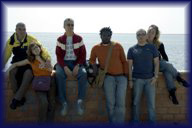 |
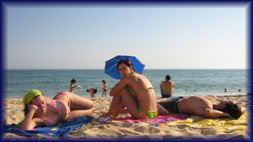 |
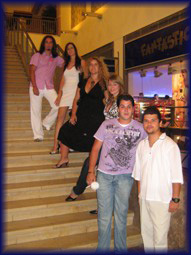 |
 |
|||
|
School Facilities |
||||||
|
|
||||||
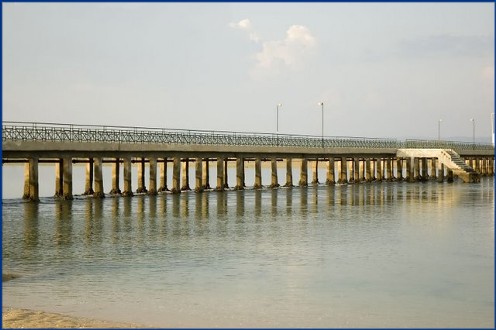 Located in the South of Portugal, Faro has been the capital of the sunny
Algarve region since the mid-16th century. Famous for its warm climate,
long impressive beaches, water sport facilities and golf courses, its historical
Moorish legacy is seen in the gleaming white villages. It has over has
300,000 inhabitants.
Located in the South of Portugal, Faro has been the capital of the sunny
Algarve region since the mid-16th century. Famous for its warm climate,
long impressive beaches, water sport facilities and golf courses, its historical
Moorish legacy is seen in the gleaming white villages. It has over has
300,000 inhabitants. 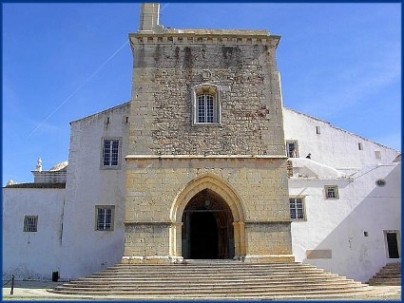 uildings are
comparatively modern. There are traces around town of a few historic
buildings,
the most interesting being the Baroque Igreja do Carmo near the central
post office on Largo do Carmo. A door to the right of the altar leads to a
macabre Capela dos Ossos (Chapel of Bones), its walls decorated with bones
disinterred from the adjacent cemetery.
uildings are
comparatively modern. There are traces around town of a few historic
buildings,
the most interesting being the Baroque Igreja do Carmo near the central
post office on Largo do Carmo. A door to the right of the altar leads to a
macabre Capela dos Ossos (Chapel of Bones), its walls decorated with bones
disinterred from the adjacent cemetery.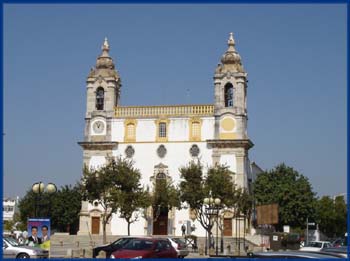 Faro was liberated from Moorish domination in 1249 and a bronze statute
of King Alfonso III stands in the main square. The old quarter of town
is still surrounded by parts of the ancient defensive walls and is worth
exploring.
Faro was liberated from Moorish domination in 1249 and a bronze statute
of King Alfonso III stands in the main square. The old quarter of town
is still surrounded by parts of the ancient defensive walls and is worth
exploring. 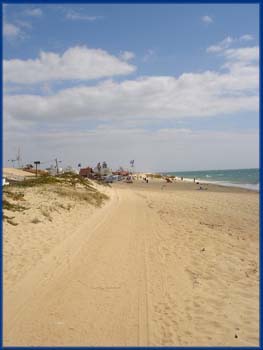 The vibe of Rua do Prior is reminiscent to Bourbon Street in New Orleans.
Located in the heart of town, it has dozens of night cafes, pubs, and discos
that rock from around 10:30pm till dawn. Visit this street after noon for
insights into the hard-drinking, hard-driving nature of this hot southern
town. The Upa Café & Bar of rua Conselheiro Bivar 51 draws a
medley of visitors and locals to its popular precincts. Tables overflow
onto the spacious patio.
The vibe of Rua do Prior is reminiscent to Bourbon Street in New Orleans.
Located in the heart of town, it has dozens of night cafes, pubs, and discos
that rock from around 10:30pm till dawn. Visit this street after noon for
insights into the hard-drinking, hard-driving nature of this hot southern
town. The Upa Café & Bar of rua Conselheiro Bivar 51 draws a
medley of visitors and locals to its popular precincts. Tables overflow
onto the spacious patio. 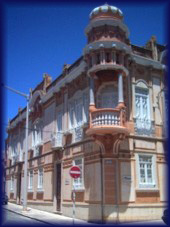 CIAL Centre: is located in the heart of the city within walking
distance of shopping and business areas. It has 8 well equipped classrooms,
and internet access.
CIAL Centre: is located in the heart of the city within walking
distance of shopping and business areas. It has 8 well equipped classrooms,
and internet access. 